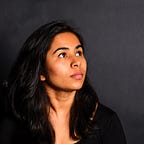Thesis mid-semester progress
Reflections 10.20.2018
Activities
I reflected on all the activities done so far —
- Readings: Books, articles and papers
- Artifact review: Analysed overall 10 products, concepts and technologies
- Developed a research plan
- Attended a conference and lectures which helped me in identifying artifacts for studying and potential for current technology.
In terms of learning, I think these are some of the main themes that emerged from the above activities so far-
- Read about the elements+elemental relations that compose maps. The visual language based on the cartographic systems and sign functions.
- Different kinds of maps throughout history and their contexts of use, issues with cartographic biases and other influences.
- How spatial perception and cognitive mapping works. This includes how urban features are categorized into major elements that people identify and how human spatial knowledge acquisition and wayfinding works.
- Learning about cognitive artifacts that could aid in experiential or reflective thinking. This might be useful in thinking about how this might be applied in spatial perception and experience.
- Looked at some spatial data visualization techniques. I found some good pointers to keep in mind to improve readability, clarity and annotation.
- Technologies: Current commercial maps and their development. Use of location data. Use other technologies to like satellite imagery, machine vision, augmented reality.
- Applications: Commercial products like Google maps or Uber, city government, business intelligence, activism, autonomous vehicles, data visualization.
Potential
I think there are two things that have some potential for exploration. Firstly, how can I use some of the learning from spatial perception, cognitive mapping, data visualization to design understand the role of the viewer? Secondly, what new knowledge can emerge through user-contributed content and does that have a potential to increase interaction and exploration of place.
Considerations and challenges
One of the challenges that I’ve faced is that sometimes the study of maps and data visualization becomes very focused on the science and technique and not necessarily about directly solving an evident particular human problem that I’m used to in my previous design projects. This makes me particularly excited to jump onto the next phase of starting my user research.
Another question that is on the back of my mind is how can I make evolve my thesis project to not only answer the research questions that I have but also how do I situate my explorations in a future context as well. Perhaps trying to answer questions like who would be the audience/user for something that I design? What application area would it serve the best? Am I trying to deepen the cognitive understanding of place through a different experience or through different way acquiring the knowledge or both? How can I leverage some of the current technology trends to amplify the impact?
Next Steps
- Start user research asap!
- Start exploring tools asap!
